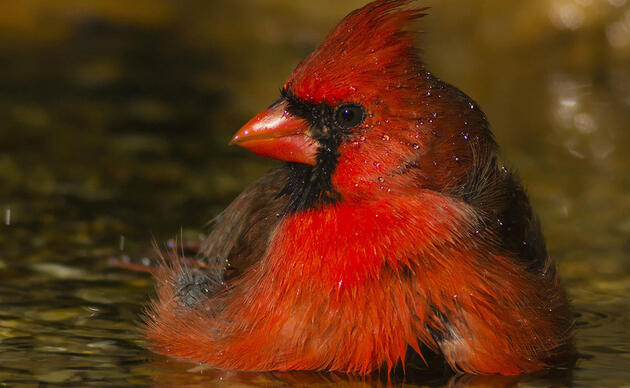SFWMD Report Shows More Trouble for Birds in the Everglades
In January 2013, the South Florida Water Management District released their annual South Florida Wading Bird Report (http://bit.ly/ZcUStU), indicating the third consecutive year of relatively poor nesting efforts across the Everglades. In response to this report, Audubon Florida has issued species-specific recommendations and restoration priorities to help curb these poor nesting trends. Please see our Audubon Fact Sheet here:http://bit.ly/ZcUKdQ.
Audubon uses key indicator species to measure Everglades restoration success. While many wading bird species are well below restoration targets, two of these species, the Roseate Spoonbill and Wood Stork, have suffered greater population declines.
“Wood Storks rely on shallow wetlands to initiate nesting. If this naturally occurring habitat is not available to them, they will fail to nest or begin nesting later, making success more difficult,” said Jason Lauritsen, Corkscrew Swamp Sanctuary Director, adding,“ If we hope to recover the largest historic colony in the US, immediate focus must be put on restoring and protecting short-hydroperiod wetlands in the Western Everglades.”
In Everglades National Park, restoration goals aim for 50% of nesting effort to occur in the southern estuarine mangrove zone (where 90% of the effort occurred in the 1930s and 40s). While 2012 nesting effort in this zone was higher than in recent years, the 5-year running average of nesting effort in this zone is still dramatically below restoration targets at 17%.
“Roseate Spoonbills fared better in Florida Bay this year than in recent years, although populations are still far below restoration targets. We need projects increasing the flow of water from the Central to Southern Everglades to bring more freshwater to Florida Bay’s fragile estuary. And maintaining reliable, boots-in-the-water research can tell you how these projects are working and what needs to be changed,” said Jerry Lorenz, State Director of Research, Audubon’s Everglades Science Center.
- For more information, please see Audubon’s comprehensive fact sheet on the 2012 South Florida Wading Bird report: http://bit.ly/ZcUKdQ.
- The South Florida Water Management District’s South Florida Wading Bird Report is available here: http://bit.ly/ZcUStU.
How you can help, right now
Donate to Audubon
Help secure the future for birds at risk from climate change, habitat loss and other threats. Your support will power our science, education, advocacy and on-the-ground conservation efforts.
Become a Monthly Donor
Donating monthly is flexible, easy and convenient and makes you a champion birds can count on, no matter the season.
Volunteers Needed
Florida's birds and wildlife need your time and energy. Learn how you can become a citizen scientist or a volunteer at one of our nature centers today.




